The level of speeding on UK roads has been revealed with one motorist caught travelling at 161mph on a 50mph stretch of the A303 in Somerset.
New data from the RAC suggests “reckless” rule-breaking with vehicles travelling more than three times the speed limit.
Almost half of UK police forces (48%), which responded to a Freedom of Information (FOI) request, have caught motorists driving over 90mph on 30mph roads.
The FOI request to the UK’s 45 police forces also found that, of the 40 with data, almost all (90%) had clocked people driving at 60mph – more than twice the limit – on these roads.
RAC road safety spokesperson, Rod Dennis, said: “Although this data is a snapshot, it shines a light on the incredibly dangerous actions of a few, that are putting law-abiding road users at serious risk.
“Thankfully, the police were on hand to catch these drivers.”
The highest recorded speed on any road was 167mph on a 70mph stretch of the M1 by Leicestershire Police.
Separate analysis has revealed that more than 24,000 drivers were clocked doing more than 100mph over a five-year period.
Among the highest speeds caught on camera was a car travelling at 164mph on the M25 in Swanley in 2022, with Kent Police unable to trace the driver of the Seat Leon.
“Choosing to drive above those limits is reckless, selfish and completely unacceptable,” Chief Inspector Jo Shiner, National Police Chiefs’ Council
In this new analysis from the RAC, more than half of police forces (58%) recorded drivers travelling in excess of 140mph.
While most of these contraventions were on 70mph motorway stretches, this was not always the case.
South Yorkshire Police clocked a driver at 146mph on a 50mph southbound stretch of the M1, while Police Scotland detected someone driving at 148mph on a 60mph section of the A68 in the Scottish Borders.
South Yorkshire Police recorded a speed of 122mph on a 30mph road, while North Wales Police logged a vehicle being driven at 88mph on a 20mph road.
Both speeds are more than four times faster than the speed limits.
“There is no place for the vastly excessive speeds that some people are prepared to drive,” continued Dennis.
“While some speeds were recorded in the middle of the night when traffic will have been lighter, this isn’t always the case – some of the fastest drivers were clocked at other times of day when they’d have been sharing the roads with many others.”
In total, six-in-10 police forces, which responded to the RAC investigation, have also caught motorists driving over twice the speed limit on 20mph roads, with seven recording speeds of more than 60mph.
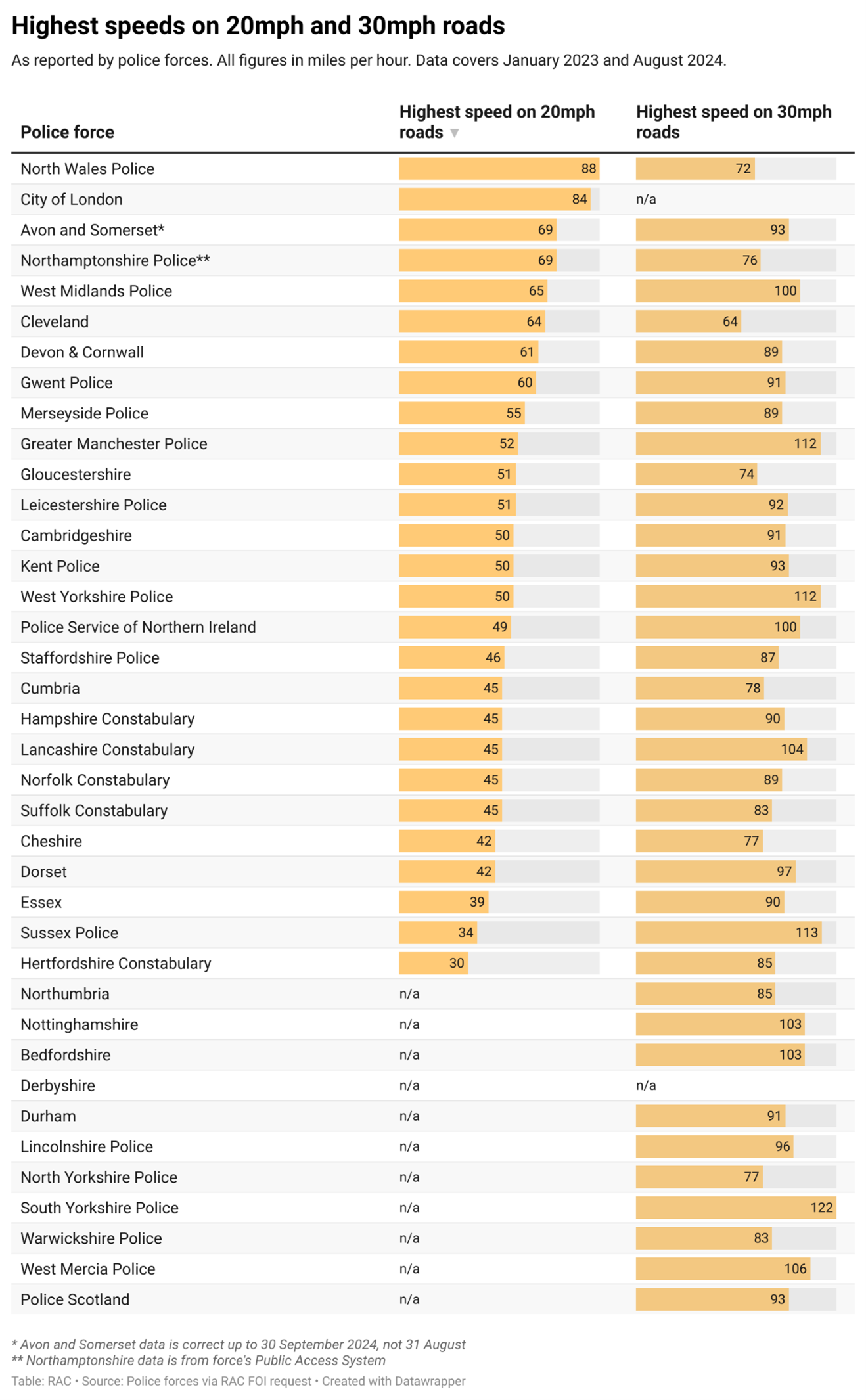
Government data shows speed is the biggest factor reported in fatal road collisions.
Excessive speed is a factor in 58% of fatalities and in 43% of road collisions of all severities, contributing to 888 fatalities and 39,882 collisions of all severities in 2023.
“Speed is the leading cause of deaths on UK roads,” added Dennis. “We look forward to the Government’s forthcoming road safety strategy understanding what can be done to reduce such avoidable casualties on the UK’s roads.”
Separate analysis by the RAC found more than half (58%) of drivers on motorways travelled above 70mph ‘frequently’ or ‘occasionally’, up from 57% in 2023.
The proportion of drivers who admitted to speeding on 60mph roads also rose to 47% from 45%, and on 30mph roads to 42% from 40% in 2024.
Eight-in-10 (81%) drivers say they regularly see people ‘excessively speeding’ on all types of roads.
National Police Chiefs’ Council lead for roads policing, Chief Constable Jo Shiner, said: “We know that some incidents of going over the speed limit can be genuine mistakes or errors but the speeds cited here are clearly drivers taking deliberate decisions to travel at excessive speeds, putting everyone at risk.
“Speed limits are set based on many factors including the road layout, what’s in the surrounding area and taking into account where there might be more vulnerable road users. Choosing to drive above those limits is reckless, selfish and completely unacceptable.
“We all have a responsibility to keep each other safe and do whatever we can to reduce the number of people killed and seriously injured on our roads each day.”
An increased use of average-speed cameras is perceived to be the most popular way to tackle the problem of speeding, with 39% of drivers backing this idea.
The introduction of radar-activated signs, which display the relevant speed limit against drivers’ actual speed is second, is supported by a third (36%) of drivers.



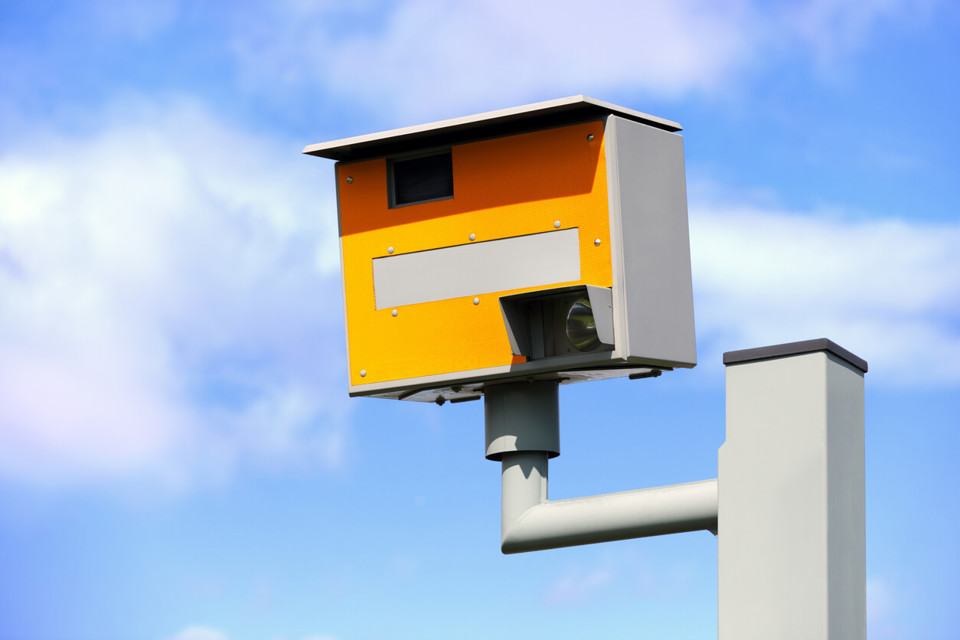






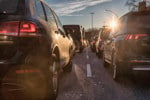
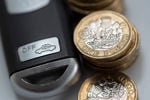






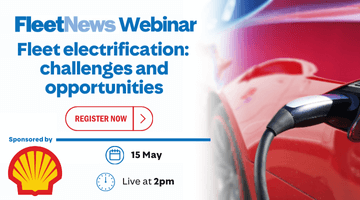


Login to comment
Comments
No comments have been made yet.